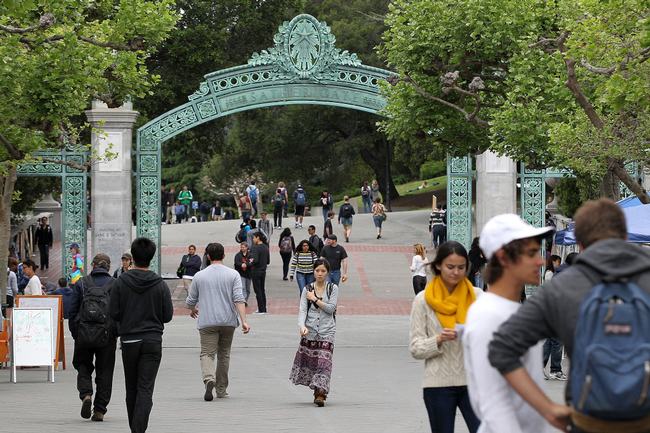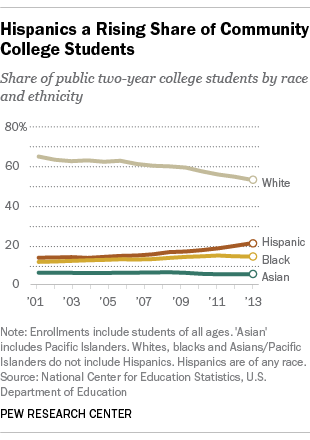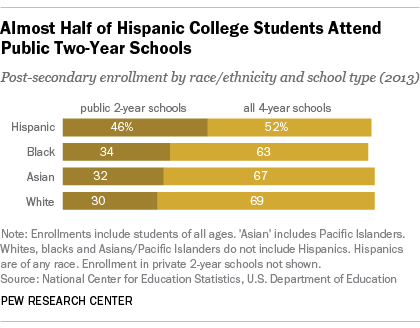5 facts about Latinos and education

Hispanics cited education as a top issue in 2014, ranking alongside the economy and above health care and immigration in importance, a Pew Research Center survey found.
Economic factors remain an obstacle for enrollment, however. In a 2014 National Journal poll, 66% of Hispanics who got a job or entered the military directly after high school cited the need to help support their family as a reason for not enrolling in college, compared with 39% of whites.
Here are five facts about Latinos and education:
- Over the past decade, the Hispanic high school dropout rate has dropped dramatically. The rate has reached a record low, dropping from 32% in 2000 to 14% in 2013 among those ages 18 to 24 years old. Over the same time period, this has helped lower the U.S. national dropout rate from 12% to 7% – also a record low. However, the Hispanic dropout rate remains higher than it is among blacks (8%), whites (5%) and Asians (4%).

- Hispanics are making big inroads in college enrollment. The number of Hispanics ages 18 to 24 enrolled in a two- or four-year college has more than tripled since 1993. In 2013, 2.2 million Hispanics were enrolled in college, up from 728,000 in 1993 – a 201% increase. By comparison, college enrollment increased by 78% among blacks and 14% among whites over the same time period. Today, Hispanics are the largest minority group on U.S. college campuses.
- Even though more Hispanics are getting a postsecondary education than ever before, Hispanics still lag other groups in obtaining a four-year degree. In 2013, among Hispanics ages 25 to 29, just 15% of Hispanics have a bachelor's degree or higher. By comparison, among the same age group, about 40% of whites have a bachelor's degree or higher (as do 20% of blacks and 60% of Asians). This gap is due in part to the fact that Hispanics are less likely than some other groups to enroll in a four-year college, attend an academically selective college and enroll full-time.
- Another reason Hispanics lag in bachelor's degrees is that nearly half who go to college attend a public two-year school, the highest share of any race or ethnicity. By comparison, among college-goers, 30% of whites, 32% of Asians and 34% of blacks go to a community college.
- Hispanics are significantly less likely than other groups to have student debt. About 22% of young Hispanic households (those headed by someone younger than 40) have education loans. The share is nearly twice as high among young white households (42%) and young black households (40%). This is because, despite growing college enrollment, young Hispanics are not as likely to go to college as some other groups. And among those who do, Hispanics are more likely than others to attend community colleges, which generally have lower tuition than four-year schools.
Source: Pew Research Center, 5 facts about Latinos and education, by Jens Manuel Krogstad, May 26, 2015.

